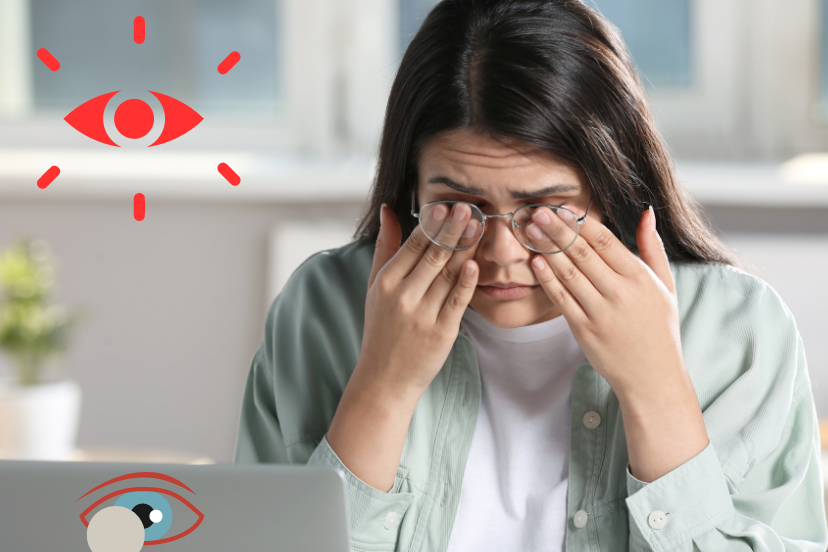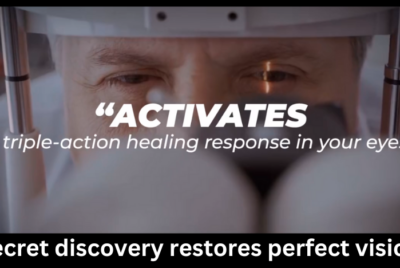Is 20/40 Vision Bad
Is 20/40 Vision Bad: Understanding And Improving Your Eyesight
Curious about Is 20/40 vision bad? As an advisor on vision health, I have encountered numerous questions about 20/40 vision and its implications on daily life. This article will explore what 20/40 vision means, its effects, potential causes, and practical tips for maintaining and improving your eyesight.
Introduction
Our vision is a precious sense that significantly impacts our daily experiences. Clear and healthy eyesight allows us to appreciate the world around us, perform essential tasks, and enjoy various activities. However, not everyone is blessed with perfect vision, and 20/40 vision is a common condition that many individuals encounter.
Understanding 20/40 Vision
Vision acuity is typically measured using a Snellen chart, which displays letters of different sizes. The first number in the 20/40 notation indicates the testing distance in feet, and the second number denotes the distance at which a person with “normal” vision can read the same line. Therefore, if you have 20/40 vision, you can see at 20 feet what someone with normal vision can see at 40 feet.
What Does 20/40 Vision Mean?
Having 20/40 vision means that objects appear blurry to you at a distance, but you can still see them clearly if they are closer. While it might not sound alarming, it can have noticeable effects on various aspects of daily life.
How Is Vision Measured?
Vision is evaluated during routine eye examinations. Optometrists or ophthalmologists use various tools and techniques to determine the sharpness and clarity of your eyesight, including the Snellen chart and other vision tests.
20/40 Vision Symptoms
Having 20/40 vision can manifest with several noticeable symptoms. Individuals with this visual acuity may experience difficulty reading small print or distant signs, leading to eyestrain and headaches. Blurry vision when looking at objects from a distance is a common symptom. Tasks that require precise depth perception, like driving or playing sports, may become challenging. Struggling to see clearly in low-light conditions is also characteristic of 20/40 vision. Squinting or rubbing the eyes to improve focus could indicate visual strain. If any of these symptoms are present, seeking an eye examination is crucial to diagnose and address potential vision issues promptly, ensuring appropriate management for optimal eye health.
How Bad Is 20/40 Vision
20/40 vision is considered subpar compared to “normal” or 20/20 vision. It means that a person with 20/40 vision needs to be at a distance of 20 feet to see what someone with normal vision can see at 40 feet. While not classified as severely impaired, 20/40 vision can still pose challenges in daily life. Activities like driving, reading small text, and participating in certain professions may be affected. However, with corrective measures like glasses, contact lenses, or other vision correction options, individuals with 20/40 vision can often lead normal and fulfilling lives, minimizing the impact of their visual impairment. Regular eye exams are vital to monitor and manage vision health effectively.
The Impact Of 20/40 Vision On Daily Life
Driving
Individuals with 20/40 vision might face challenges while driving, especially at night or in adverse weather conditions. Distance judgment and reading road signs from afar can be difficult, making driving less safe.
Reading
Reading small prints or texts from a distance might become straining, leading to eyestrain and headaches.
Sports And Activities
Engaging in sports or activities that require accurate depth perception and distance judgment may be more challenging for those with 20/40 vision.
Work And Productivity
Certain professions that demand precise eyesight, such as pilots, surgeons, or artists, can be impacted by 20/40 vision.
Is 20/40 Vision Bad For Everyone?
The impact of 20/40 vision varies from person to person. Some individuals might adapt well and experience minimal disruptions in their daily activities, while others might find it significantly affecting their quality of life.
What Is Considered Bad Vision?
It is when an individual experiences significant difficulty seeing clearly, also known as poor or impaired vision. Vision is typically measured using a Snellen chart, with numbers such as 20/40 or 20/200. and when vision worse than 20/40 is generally considered subpar and may require corrective measures like glasses, contact lenses, or surgery. Vision worse than 20/200 is classified as legal blindness. Poor vision can impact daily activities, reduce quality of life, and necessitate regular eye care to manage and improve eyesight.
What Is 20/40 Vision Look Like
In 20/40 vision, objects at a distance appear blurry but clear when they are closer. For example, someone with 20/40 vision needs to stand at 20 feet to see what a person with normal vision can see at 40 feet. Reading small print from afar may be challenging, and details in the distance might not be as clear as they are for someone with 20/20 vision.
Is It OK To Have 20 40 Vision?
It is generally considered acceptable for daily activities but may vary depending on individual needs and lifestyle. While it may not be classified as perfect vision (20/20), many people with 20/40 vision can function well without significant hindrances. However, monitoring any vision changes and undergoing regular eye exams to detect potential issues early is essential. If it causes difficulties in daily tasks or affects the quality of life, seeking corrective measures like glasses or contact lenses is recommended to improve visual clarity and comfort.
Causes Of 20/40 Vision
20/40 vision is often a result of refractive errors or underlying eye conditions.
Refractive Errors
Refractive errors, like myopia (nearsightedness) or hyperopia (farsightedness), can lead to 20/40 vision.
Eye Conditions
Certain eye conditions, such as astigmatism or presbyopia, can also cause 20/40 vision.
Tips For Improving And Maintaining Vision Health
Taking proactive steps to maintain and improve vision health can significantly benefit those with 20/40 vision.
Regular Eye Exams
Regular eye exams are essential for improving and maintaining vision health as they help detect vision issues early, allowing timely interventions. Eye exams check for refractive errors, eye conditions, and other potential problems. Early detection and appropriate treatment can prevent vision deterioration and ensure optimal eye health. Regular exams also ensure that eyeglass or contact lens prescriptions are up-to-date, providing clear and comfortable vision for daily activities and promoting overall eye wellness.
Proper Eyewear
Wearing prescribed glasses or contact lenses can enhance vision clarity and reduce strain. Proper eyewear, such as glasses or contact lenses, can significantly improve and maintain vision health by correcting refractive errors like myopia, hyperopia, and astigmatism. It provides clear and comfortable vision, reducing eyestrain and headaches. Using prescribed eyewear enhances focus and visual acuity, making daily activities easier and more enjoyable. Regular eye check-ups ensure that the prescription remains accurate, ensuring optimal eye health and overall well-being.
Healthy Diet
A balanced diet rich in vitamins and nutrients, particularly those beneficial for eye health, can be beneficial. A healthy diet plays a crucial role in improving and maintaining vision health. Consuming foods rich in nutrients like vitamins C and E, zinc, lutein, zeaxanthin, and omega-3 fatty acids supports eye health. These nutrients help protect against age-related macular degeneration and cataracts. A balanced diet with colorful fruits, vegetables, leafy greens, and fish can significantly contribute to better vision and overall eye wellness.
Eye Exercises
Practicing eye exercises can strengthen eye muscles and improve focus. Eye exercises can improve and maintain vision health by strengthening eye muscles and enhancing focus. These exercises may help reduce eye strain and alleviate symptoms of conditions like astigmatism or computer vision syndrome. By regularly practicing eye exercises, individuals can enhance their eye coordination and flexibility, leading to improved visual acuity and overall eye comfort. However, it’s essential to consult an eye care professional before starting any eye exercise regimen.
Reducing Screen Time
Limiting excessive screen time can alleviate eye strain caused by digital devices. Reducing screen time is beneficial for maintaining vision health as it helps alleviate digital eye strain and reduces the risk of developing computer vision syndrome. Prolonged screen exposure can lead to dry eyes, eyestrain, and blurred vision. Taking regular breaks, following the 20-20-20 rule (looking at something 20 feet away for 20 seconds every 20 minutes), and limiting screen usage can significantly improve eye comfort and overall vision health.
Protecting Eyes From UV Rays
Wearing sunglasses with UV protection shields the eyes from harmful rays and reduces eye conditions risk. Protecting eyes from UV rays is crucial for maintaining vision health, as prolonged exposure to UV radiation can lead to eye conditions like cataracts, macular degeneration, and photokeratitis. Wearing sunglasses with UV protection shields the eyes from harmful rays, reducing the risk of these conditions. Additionally, it helps prevent eye discomfort and sun-related eye issues, ensuring better long-term eye health.
When To Seek Professional Help
If you notice any changes in your vision or experience difficulties in daily activities due to 20/40 vision, it’s essential to consult an eye care professional promptly.
Vision Correction Options
Depending on individual preferences and eye health, various options are available for vision correction.
Glasses
Prescription eyeglasses are a common and effective way to correct vision. Glasses help with vision correction by compensating for refractive errors in the eye. The lenses in glasses bend light rays, ensuring they focus correctly on the retina. This correction improves visual acuity, allowing individuals to see more clearly and comfortably, making daily tasks and activities easier.
Contact Lenses
Offer an alternative to glasses, providing a more natural field of view. Contact lenses help with vision correction by directly sitting on the eye’s surface and refracting light, compensating for refractive errors like myopia, hyperopia, and astigmatism. They provide clear vision without obstructing eyeglass frames, offering a natural field of view for daily activities.
LASIK Surgery
A popular option for those seeking permanent vision correction. LASIK surgery helps with vision correction by reshaping the cornea, the clear front part of the eye. Doing so corrects refractive errors like myopia, hyperopia, and astigmatism, reducing or eliminating the need for glasses or contact lenses and providing clearer vision.
Other Surgical Procedures
In some cases, other surgical procedures might be recommended to improve vision. Other surgical procedures for vision correction, such as PRK (Photorefractive Keratectomy) or phakic intraocular lenses, can address refractive errors like myopia, hyperopia, and astigmatism. These procedures reshape the cornea or place specialized lenses inside the eye to improve visual acuity and reduce dependency on glasses or contact lenses.
Living With 20/40 Vision
Coping Strategies And Lifestyle Adjustments
Living with a 20/40 vision can be manageable with some coping strategies and lifestyle adjustments. Individuals may opt for prescribed eyeglasses or contact lenses to enhance daily life, enabling clearer vision. Regular eye exams are essential to monitor changes and ensure appropriate interventions. Reducing screen time and practicing eye exercises can help alleviate eye strain. Adapting to sports and activities that consider depth perception challenges can aid in participation. Embracing a healthy diet rich in eye-friendly nutrients is beneficial. Seeking professional help promptly for any vision-related concerns is crucial. By implementing these strategies and adjustments, individuals with 20/40 vision can maintain a fulfilling and productive lifestyle while protecting their precious eyesight.
The Importance Of Vision Health
Maintaining good vision health is crucial for overall well-being and quality of life. Vision health is of utmost importance as it significantly impacts our overall well-being and daily functionality. Clear and healthy eyesight allows us to appreciate the beauty of the world and engage in various activities with ease. Regular eye examinations are vital in detecting vision issues early and facilitating timely interventions. Proper eyewear, such as glasses or contact lenses, can correct refractive errors and reduce eye strain. A balanced diet rich in essential nutrients supports eye health and reduces the risk of eye conditions. Protecting our eyes from harmful UV rays with sunglasses is crucial. Vision health enhances our quality of life and ensures our safety, productivity, and enjoyment of daily experiences.
What Is 20/40 Vision Prescription?
A 20/40 vision prescription indicates that a person needs corrective eyewear to improve their visual acuity. It means that they can see at 20 feet what someone with normal vision can see at 40 feet. The prescription typically includes lenses with a specific power to address refractive errors like myopia (nearsightedness) or hyperopia (farsightedness). The precise prescription will vary based on the individual’s specific vision needs, and eyeglasses or contact lenses are prescribed accordingly to help them see more clearly and comfortably.
Is 20/40 Vision Bad For A Child
While a child may not be severely impaired, it can still affect their daily activities. Children with 20/40 vision might experience difficulties reading, learning, and participating in sports or other activities requiring clear eyesight. Regular eye check-ups and early intervention are crucial to address any vision issues promptly. With appropriate eyeglasses or other corrective measures, most children can adapt well and enjoy a normal lifestyle, ensuring their visual health is optimized for optimal growth and development.
Conclusion
In conclusion, while the 20/40 vision may not be considered “bad” for everyone, it can have significant implications for various aspects of daily life. Individuals with 20/40 vision may face challenges in activities like driving, reading, and certain professions that demand precise eyesight. However, its impact can be minimized with proactive measures such as regular eye exams, proper eyewear, and a healthy lifestyle. Seeking professional help when needed and exploring vision correction options can further improve the quality of life for those with 20/40 vision. Understanding the importance of vision health and taking steps to maintain it is essential for overall well-being and a fulfilling life experience.
Please note that this article should not replace professional medical advice. Consult a healthcare professional for an accurate diagnosis and tailored treatment plan.
Frequently Asked Questions (FAQs)
Can 20/40 vision be improved naturally?
While some individuals may experience minor improvements through eye exercises and lifestyle changes, it’s best to consult an eye care professional for appropriate guidance.
Is 20/40 vision considered legally blind?
No, It does not meet the criteria for legal blindness, which is usually defined as having 20/200 vision in the better eye with correction.
Does 20/40 vision disqualify me from driving?
In most regions, It is sufficient to obtain a driver’s license. However, specific driving requirements may vary, so checking with local authorities is essential.
Is 20-40 or 20-50 vision worse?
20/50 vision is generally considered worse than 20/40 vision. With 20/50 vision, a person needs to be at 20 feet to see what someone with normal vision can see at 50 feet, indicating poorer visual acuity than 20/40 vision.
Does 20-40 vision mean minus?
That measurement does not necessarily indicate a minus prescription. It simply means that the person can see at 20 feet what someone with normal vision can see at 40 feet. The specific prescription, whether plus or minus, depends on the individual’s refractive error (e.g., myopia or hyperopia) and the need for corrective lenses.
Can LASIK surgery correct 20/40 vision?
LASIK surgery can be an effective option for improving vision, but the eligibility for the procedure depends on individual eye health and other factors.
Can 20/40 vision be hereditary?
Specific refractive errors and eye conditions that cause 20/40 vision can have a genetic component, making it possible for it to be hereditary.




